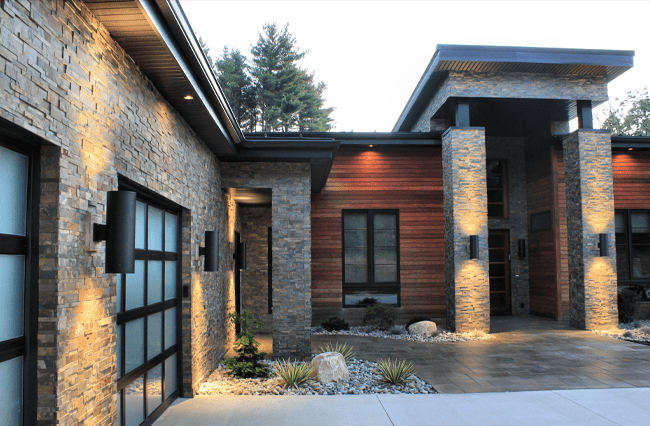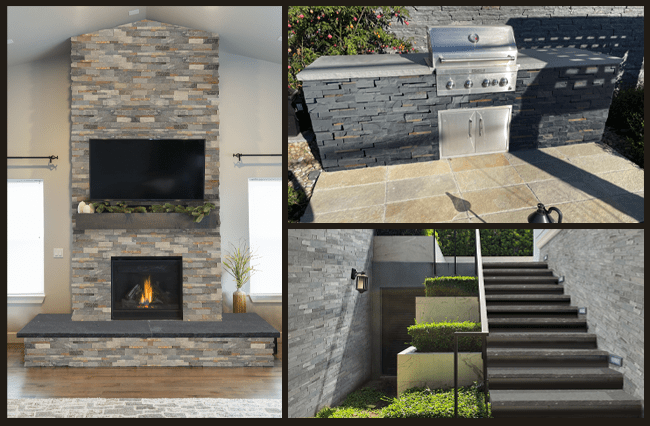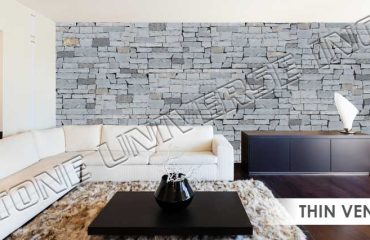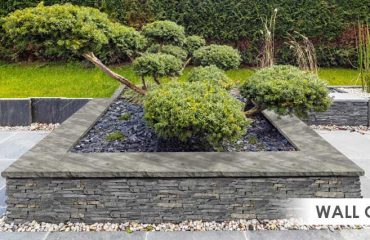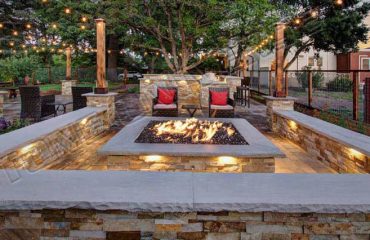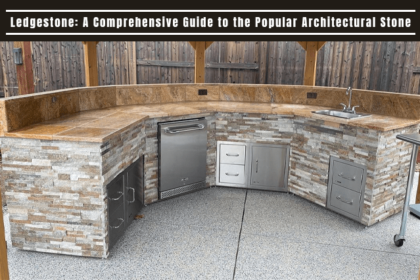
Introduction
In the world of architecture and design, materials play a crucial role in defining the aesthetic and functionality of a structure. One such material that has gained immense popularity over the years is ledge stone, a versatile and visually appealing building stone used in both exterior and interior applications.
What is Ledge stone?
Ledgestone refers to a natural stone or stone veneer typically cut into thin, rectangular pieces that can be stacked to create a distinctive, rugged, and textured appearance. It’s characterized by its horizontal appearance, often used for creating walls, facades, fireplaces, and other vertical surfaces. Its rough edges and varied colors give it a natural, rustic look, making it a favorite choice for adding warmth, depth, and an organic feel to both contemporary and traditional designs.
Ledgestone is primarily made from natural stones such as limestone, slate, quartzite, or sandstone, though man-made varieties exist. The final product is highly textured, offering a three-dimensional effect that adds sophistication to any design.
Characteristics of Ledgestone
The allure of ledgestone lies in its unique characteristics. Here are the primary features that set ledgestone apart:
- Texture: One of the defining characteristics of ledgestone is its rough, textured surface. The uneven, natural look of the stone creates a three-dimensional effect that adds depth and complexity to any surface it covers.
- Variety of Colors: Depending on the type of stone used, ledgestone comes in a wide range of natural colors, including grays, browns, reds, blacks, and even greens. The diversity in hues allows it to complement various design aesthetics, whether earthy and rustic or sleek and modern.
- Shape and Size: Ledgestone is typically cut into thin, flat strips that are longer than they are tall, which can vary in width and thickness. This format makes it ideal for horizontal stacking and creating a seamless flow across a surface. The varying thickness of the pieces can enhance the wall’s natural appeal and give it a hand-crafted feel.
- Durability: Natural ledgestone, especially when made from hard stones like quartzite or slate, is extremely durable and can withstand harsh environmental conditions. This makes it an excellent choice for exterior applications, such as cladding or landscaping walls.
- Low Maintenance: Ledgestone is known for its ease of maintenance. Its rugged texture and natural color help to remove dirt and imperfections easily, making it a long-lasting, low-upkeep material for both indoor and outdoor use.
Types of Ledgestone
Ledgestone is typically categorized by the type of stone it is made from, each offering its unique look and characteristics. Below are some of the most common types of ledgestone:
- Limestone: Limestone is soft and porous, making it easier to cut and shape than other varieties. Its tones, such as white, beige, and light gray, give it a subtle elegance that complements both modern and traditional architecture. This ledgestone type is commonly used in exterior cladding and interior accent walls.
- Slate: Slate is a highly durable material known for its rich, dark colors and fine grain. Slate ledgestone adds a distinct textured appearance. Its dark hues, ranging from charcoal to deep green, make it popular for sleek, modern designs.
- Quartzite: Quartzite is an extremely hard and durable stone, often featuring a shimmering or glossy appearance due to the presence of quartz crystals. This type of ledgestone is ideal for outdoor applications because of its resistance to weathering and fading.
- Sandstone: Sandstone is typically soft and can be found in a wide range of earth tones, from tan and brown to rust and red. Sandstone is often used in warmer climates because of its thermal properties, which help regulate temperature.
Applications of Ledgestone
Ledgestone’s versatility allows it to be used in a variety of applications, both indoors and outdoors. Its natural, rugged look adds texture and depth, making it a popular choice for design projects ranging from home renovations to large-scale commercial buildings. Below are some of the most common uses of ledgestone:
- Exterior Cladding: One of the most popular uses of ledgestone is as a cladding material for exterior walls. Ledgestone can transform the appearance of a building by adding texture and a natural feel to the façade. Its durability makes it an ideal choice for withstanding the elements, especially in harsh climates.
- Fireplaces: Ledgestone is frequently used to create fireplaces, both indoors and outdoors. The rough texture of the stone provides a beautiful contrast to the smoothness of fire, adding warmth and a focal point to any space. The earthy tones of the stone help create a cozy, inviting atmosphere.
- Accent Walls: Ledgestone is often used to create accent walls in interior spaces, such as living rooms, dining areas, and entryways. The natural texture of the stone adds a unique visual element.
- Retaining Walls: In landscaping, ledgestone is commonly used for retaining walls. Its rugged appearance blends well with the natural environment, while its strength makes it ideal for creating terraces.
- Water Features: Ledgestone is also popular for use in water features such as fountains, ponds, and pool surrounds. The texture of the stone can create interesting visual effects when paired with water, and its natural durability ensures it can withstand the constant presence of moisture.
- Pathways and Patios: When used in thinner cuts, ledgestone can also be applied to horizontal surfaces such as pathways, patios, and even indoor flooring. Its slip-resistant surface makes it a practical choice for outdoor areas, while its rugged appearance adds a touch of natural beauty.
Benefits of Using Ledgestone
The growing popularity of ledgestone in modern architecture can be attributed to a number of benefits it offers. Here are some of the key advantages of using ledgestone in construction and design:
- Aesthetic Appeal: Ledgestone’s natural texture and variation in color give it a distinctive, organic look that adds beauty and depth to any design. Whether used in contemporary or traditional spaces, it creates a sense of timelessness and sophistication.
- Versatility: Ledgestone can be used in a wide range of applications, from interior accent walls to exterior cladding. Its ability to complement both modern and rustic designs makes it a versatile material for various design styles.
- Durability: Natural ledgestone is highly durable, withstanding wear and tear from weather, moisture, and daily use. When properly installed and maintained, it can last for decades without losing its visual appeal.
- Environmental Benefits: Natural stone is a sustainable building material. Moreover, stone has excellent thermal properties, which can help regulate the temperature of buildings and reduce energy consumption.
Conclusion
Ledgestone has become a favorite material among architects, builders, and designers for its unique blend of beauty, durability, and versatility. Its textured appearance, wide range of colors, and various types make it suitable for both contemporary and traditional designs. From exterior cladding to fireplaces and accent walls, ledgestone offers countless possibilities for enhancing the visual and functional aspects of a space. With its timeless appeal and lasting strength, ledgestone is a material that continues to play a significant role in modern architecture and design. Whether used for small residential projects or large commercial buildings, ledgestone brings the beauty of natural stone into our built environments in an elegant and enduring way.
 Trade Show 2023: HNA, Oct 18-20, 2023 Louisville, KY - Booth# 30022
Trade Show 2023: HNA, Oct 18-20, 2023 Louisville, KY - Booth# 30022